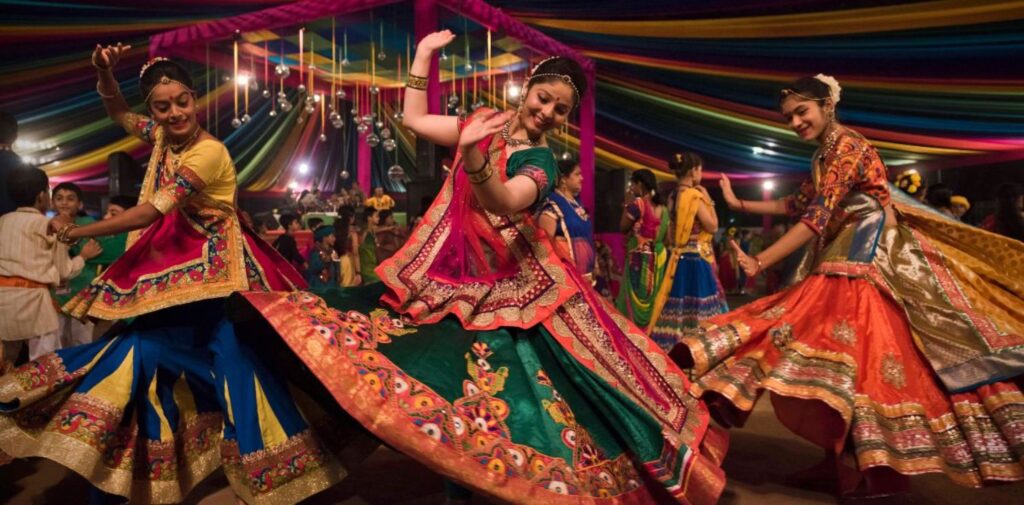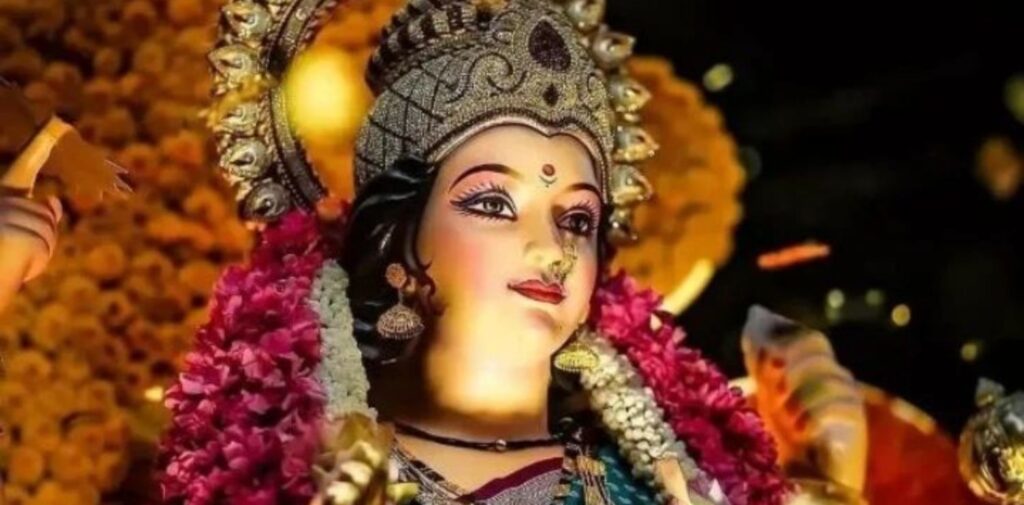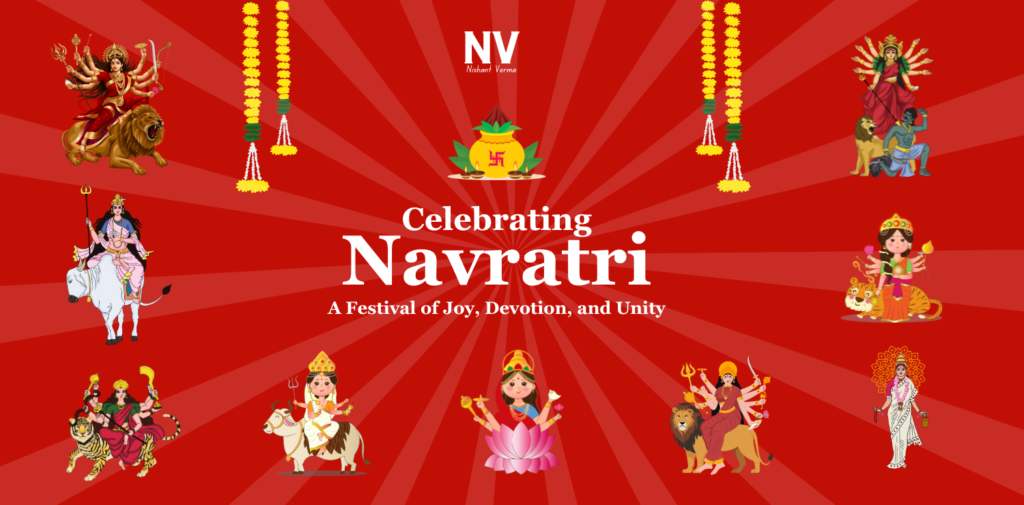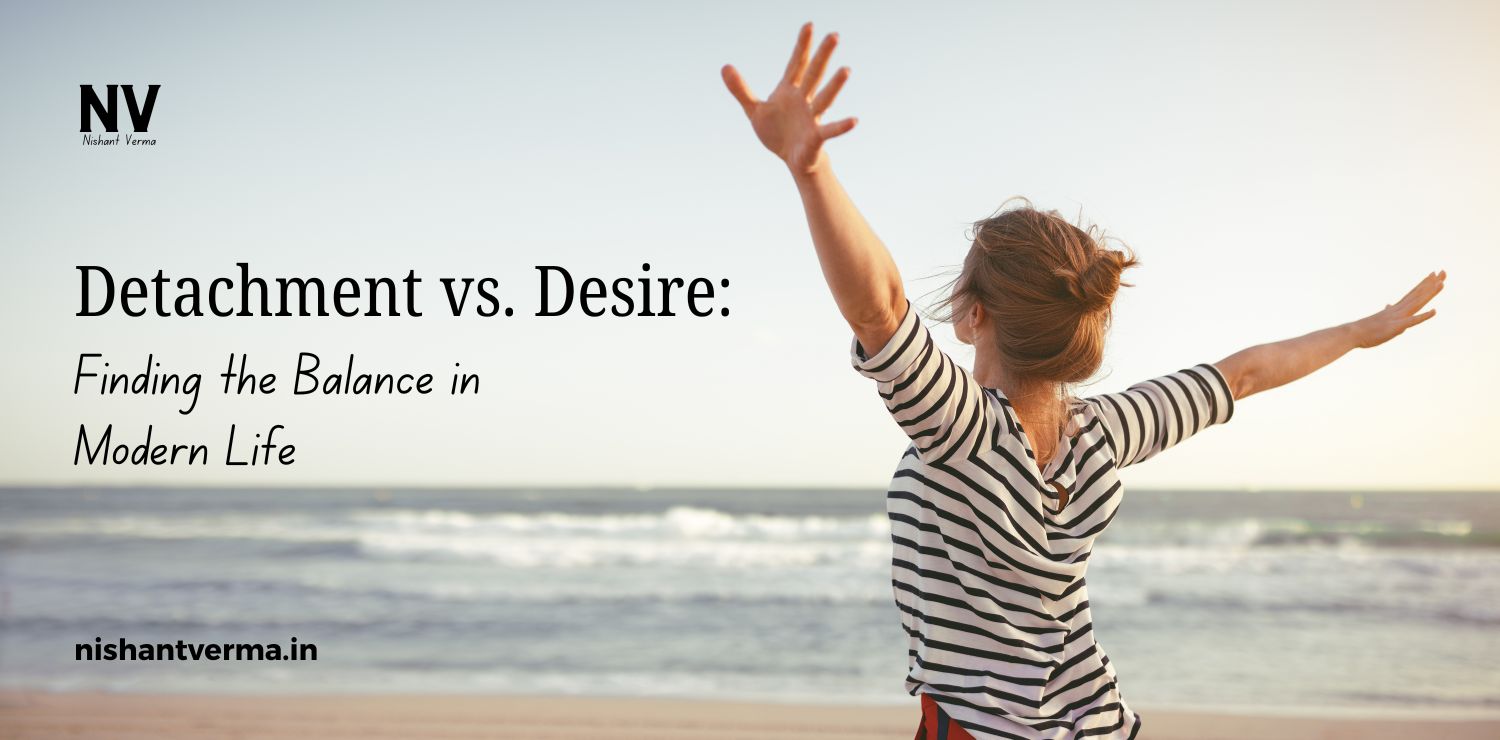Navratri, meaning “nine nights,” is one of the most celebrated festivals in India, dedicated to the worship of Goddess Durga. This vibrant festival is celebrated with immense zeal and enthusiasm across the country, especially in states like Gujarat, Maharashtra, West Bengal, and Uttar Pradesh. Each year, Navratri falls in the Hindu month of Ashwin, usually around September or October. In 2024, Navratri begins today and will last until October 11th, culminating in the festival of Dussehra.
The Significance of Navratri
Navratri holds profound spiritual significance for millions of people. It symbolizes the victory of good over evil, as the festival commemorates Goddess Durga’s triumph over the buffalo demon Mahishasura. The nine nights represent the nine forms of Goddess Durga, known as the Navadurga, each embodying different qualities and virtues.

- Shailaputri: The first day is dedicated to Shailaputri, symbolizing strength and the power of nature.
- Brahmacharini: The second day honors Brahmacharini, representing knowledge and wisdom.
- Chandraghanta: On the third day, devotees worship Chandraghanta, who signifies beauty and courage.
- Kushmanda: The fourth day is dedicated to Kushmanda, the goddess who brings light and prosperity.
- Skandamata: On the fifth day, Skandamata is worshipped, representing maternal love and protection.
- Katyayani: The sixth day honors Katyayani, who embodies the spirit of warrior-like strength.
- Kalaratri: The seventh day is dedicated to Kalaratri, the fierce form of the goddess, who protects her devotees from negativity.
- Mahagauri: On the eighth day, Mahagauri is worshipped, symbolizing purity and wisdom.
- Siddhidatri: The ninth day is dedicated to Siddhidatri, representing the attainment of perfection and spiritual enlightenment.
The Rituals and Celebrations
It’s not just a festival but a beautiful blend of rituals, dances, and prayers. Here are some of the key aspects that makes a unique and cherished festival:
Fasting and Devotion
During Navratri, many devotees observe fasts. Fasting is considered a way to purify the body and mind, and it allows individuals to focus on their spiritual growth. Some people consume only fruits and milk, while others may refrain from food entirely. This practice is a personal choice, and it varies among individuals and families.

Dandiya Raas and Garba
In Gujarat, the festival is renowned for its lively dances—Dandiya Raas and Garba. Dandiya Raas involves colorful sticks, while Garba is performed in a circular formation, celebrating the feminine energy of the goddess. People dress in traditional attire, adorned with bright colors and intricate patterns, and dance together in unity and joy.
Durga Pooja
In states like West Bengal, Navratri culminates in Durga Puja, a grand celebration where beautifully crafted idols of Goddess Durga are worshipped. The rituals include offering flowers, fruits, and sweets to the goddess. The ambiance is filled with devotional songs, dhak (drum) beats, and vibrant decorations. The festival showcases the rich culture and artistic heritage of the region.
Maa Durga’s Idols and Decorations
The installation of Maa Durga’s idols in homes and public spaces is a common practice. These idols are beautifully decorated with flowers, jewelry, and vibrant clothes, symbolizing prosperity and joy. People often gather to offer prayers and perform rituals, fostering a sense of community and togetherness.
Nine Nights of Celebration
Each night is marked with special prayers and rituals. Many people gather at temples or community halls to participate in evening prayers, singing bhajans (devotional songs) and performing aarti (ritual of light). These gatherings create a sense of togetherness and foster a community spirit, as people of all ages come together to celebrate.
The Colors of Navratri
Each day is associated with a specific color that symbolizes various virtues. Here’s a glimpse of the colors and their significance:

Day 1 (Shailaputri): Yellow – Represents happiness and optimism.
Day 2 (Brahmacharini): Green – Signifies peace and harmony.
Day 3 (Chandraghanta): Grey – Symbolizes strength and resilience.
Day 4 (Kushmanda): Orange – Represents enthusiasm and creativity.
Day 5 (Skandamata): White – Signifies purity and wisdom.
Day 6 (Katyayani): Red – Represents love and courage.
Day 7 (Kalaratri): Blue – Symbolizes calmness and protection.
Day 8 (Mahagauri): Pink – Signifies compassion and grace.
Day 9 (Siddhidatri): Purple – Represents spirituality and enlightenment.
Devotees often dress in the color associated with the day, adding vibrancy and energy to the celebrations.
The Culmination: Dussehra
Navratri culminates in Dussehra, which celebrates the victory of Lord Rama over the demon king Ravana, symbolizing the triumph of good over evil. This day is marked by the burning of effigies of Ravana, Meghnath, and Kumbhkaran, followed by joyous celebrations. It’s a reminder to everyone that evil will eventually be vanquished.
Navratri: A Festival of Unity and Diversity
One of the most beautiful aspect is its ability to unite people from diverse backgrounds. Regardless of religion, caste, or creed, individuals come together to celebrate, share, and experience the joy of this festival. It fosters a sense of belonging and strengthens community ties.
Cultural Exchange
Navratri is an opportunity for cultural exchange, as people from various regions and communities share their traditions, food, and celebrations. It encourages dialogue and understanding, fostering harmony among different groups.
Food and Festivities
Food plays a vital role in this celebrations. Special dishes, often made without grains or certain ingredients, are prepared to honor the goddess. Sweets like kalakand and halwa, along with savory items like sabudana khichdi, are popular during this time. Sharing food with family and friends enhances the festive spirit.

Spiritual Growth
For many, It’s a time for introspection and spiritual growth. The rituals and prayers provide an opportunity to connect with the divine, seek blessings, and cultivate a deeper understanding of oneself and one’s faith.
Conclusion: Embracing the Spirit of Navratri
As Navratri begins today, it invites us to reflect on our values and priorities. It encourages us to embrace the virtues embodied by Goddess Durga—strength, wisdom, courage, and compassion. The festival serves as a reminder that, like the goddess, we too can overcome challenges and emerge victorious in our lives.
Let us celebrate with joy, devotion, and unity. May this festival fill our hearts with positivity and inspire us to seek goodness in ourselves and the world around us. As we come together to honor the goddess, let’s also cherish the bonds we share with each other, making a memorable celebration of life, love, and community. Happy Navratri!




